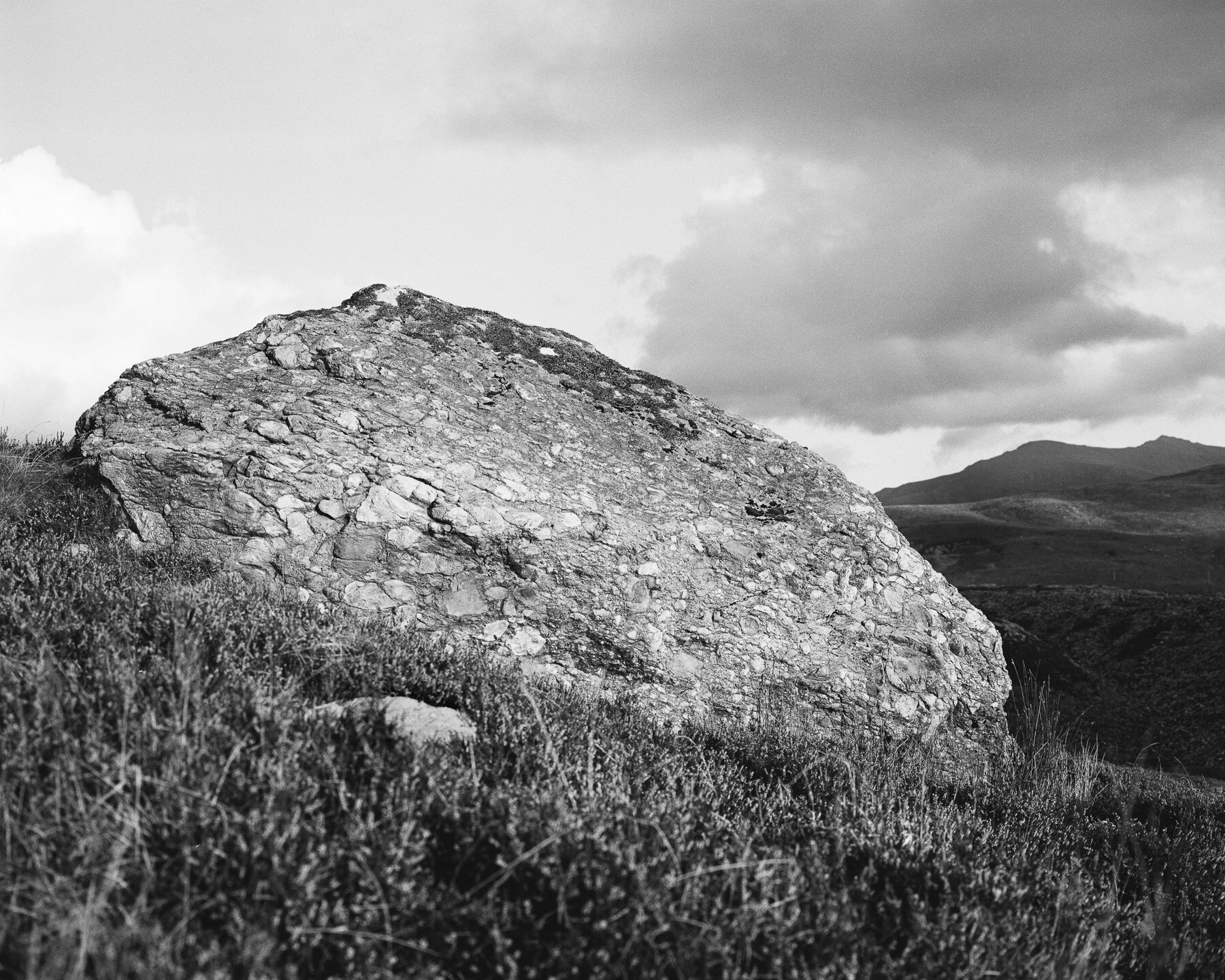On Walking | Janet Ruth Davies
From the series Hidden in Plain Sight
On Walking Transhumance - archival image
My love of walking was born out of being a shepherdess many years ago. During the winter and summer months I walked a transhumance, feet following hooves, a seasonal migration from one Welsh mountain pasture to the next. I encountered place, space, and people within a landscape. I situated myself ‘in a world of movement, relationships, memories and histories’1.
I walked within a land that is shaped by those who dwell within it and embodied ‘a perceptual engagement with an environment that itself is pregnant with the past’2. I reflect on how walking has become part of my photographic practice and ask what it is to place, to belong, and what does out of place mean? I walk in my homeland, the mountains of North Wales. I walk to embrace uncertainty. I walk to be in the unknown and to forget. I walk my body and my body walks me.
From the series Hidden in Plain Sight
"I walk to embrace uncertainty”
From the series Hidden in Plain Sight
For the past three years I have walked to find, locate, and photograph erratic boulders: a project inspired by a field trip made by Charles Darwin. Darwin, in a search for geological evidence to prove an ice age had sculpted the landscape of north Wales, located a group of erratic boulders in a mountain cirque called Cwm Idwal. He realised the physical bodies of the boulders were out of place, that they had migrated and travelled on the receding glaciers to arrive at this point in their geological journey.
The visual metaphor of the erratics can be perceived by how we, as a culture and individually are disrupted, displaced, and moved by our environment. I imagine in a not-too-distant future I can walk another line and follow a proposition that Darwin undertook in 1831, a walk connecting coast to coast. Another transhumance perhaps, this time walking as an encounter with personal and cultural mythologies along the way.
For whatever reason we walk, whether it is for protest, pilgrimage, or simply because it is slow, walking will continue to allow us to stray from our path and in the words of Solnit, can be reimagined as ‘ambiguous and endlessly fertile: it is both means and end, travel and destination’3.
From the series Hidden in Plain Sight
by Janet Ruth Davies
All images shown are the artist’s work
Janet Ruth Davies is a Welsh artist and photographer. I work with documentary narratives that explore perception, environment and the archive. I am interested in walking as a practice to map and navigate contemporary mythologies of place.
I am reading:
[1] Bender, B (2001) Landscapes-on-the-move. Journal of Social Archaeology: Sage
Abram, D. (2010) Becoming Animal. An Earthly Cosmology. New York: Vintage Books
Dean, T. (2011) Selected Writings 1992-2011 Seven Books Grey. Göttingen: Steidl
Horn, R. (1997) You Are the Weather. Zürich, New York: Scalo Verlag Ac
[2] Ingold, T. (2011) The Perception of the Environment. Abingdon: Routledge
[3] Solnit, R. (2002) Wanderlust - A History of Walking. London: Verso
On Walking Transhumance






